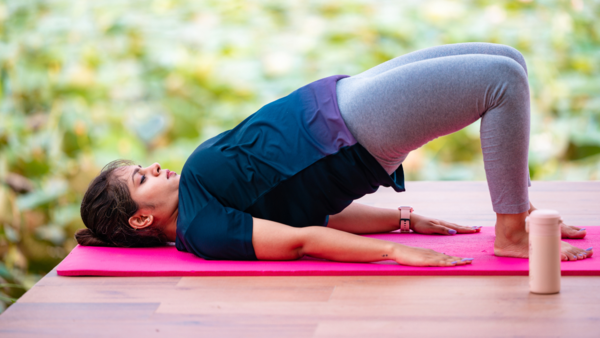The intricate system of muscles, ligaments, and tissues that makes up the pelvic floor is vital to a woman’s general health and wellbeing. Conditions like pelvic organ prolapse and incontinence can arise from the weakening of the pelvic floor caused by a woman’s life stages, including pregnancy, childbirth, and aging. These muscles, which support key organs and improve sexual function, are essential but frequently disregarded. Thus, specific workouts called kegel exercise are necessary to prevent pelvic floor dysfunction and to preserve strength and control. Here are some Kegel workouts every woman must do to maintain or strengthen her pelvic floor muscles:
Squeeze and release
The muscles you use to stop gas or pause your urination in the middle should be squeezed and released repeatedly for this one. You should experience a mild tugging sensation in your vagina and rectum. At first, you may find it easiest to perform them while lying down.
Bridge pose
Kegel exercises involve elevating your midsection while keeping your core tight, holding, and then letting go of your pelvic floor muscles. It is similar to doing a repeated bridge pose. Begin by performing a small number of Kegel exercises at a time, then progressively increase the duration and quantity of Kegel exercises performed during each “session” (or set). At least two to three sets of these exercises should be done each day.

Find the muscles
Another option for those who find it tough to locate their pelvic muscles is to insert your finger into your vagina and squeeze it as though you were trying to contain your urination. Squeezing the pelvic floor muscles causes a tight sensation around your finger. You can perform Kegel exercises standing, sitting, or lying down once you’ve identified the appropriate muscles.
Heel slides
Heel slides work the deep abdominal muscles and promote pelvic floor contractions. With your pelvis in a neutral position and your knees bent, start by resting on the floor. Breathe in through your rib cage and out through your mouth, allowing your ribs to contract naturally. Slide your right heel away from you, lock in your core, and raise your pelvic floor. Go as far as you can without losing touch with your own self. After determining the lowest position, take a breath and return your leg to the beginning position. Do it again. Do 10 slides up and back, then repeat with the other leg.
Pelvic tilts
Pelvic tilts contribute to pelvic floor stability by strengthening your abdominal and lower back muscles. With your feet flat on the floor and your knees bent, lie on your back. Press your lower back against the floor and tense your abdominal muscles. Release after a few seconds of holding. As your muscles get stronger, progressively increase the number of repetitions to ten to fifteen.





